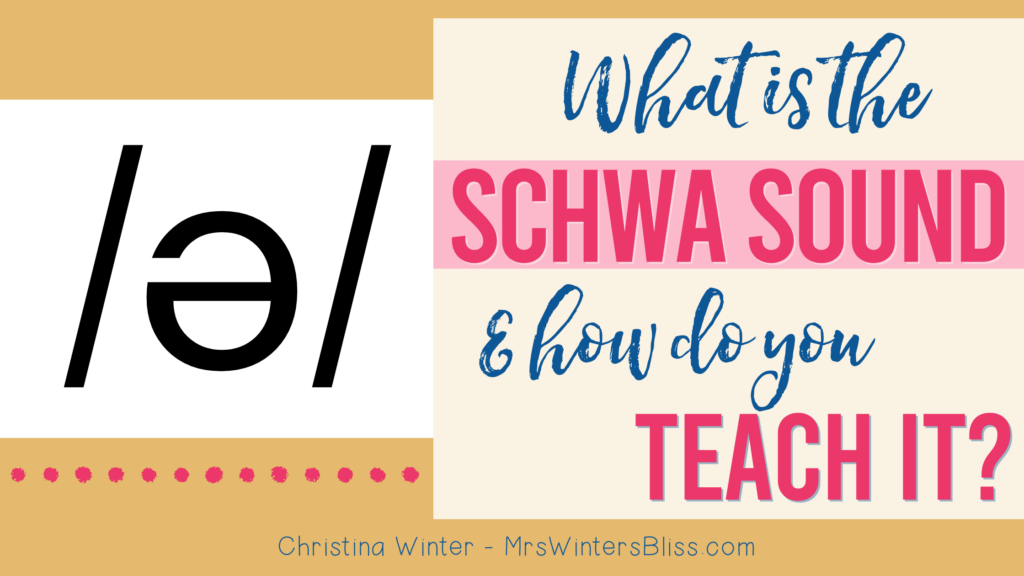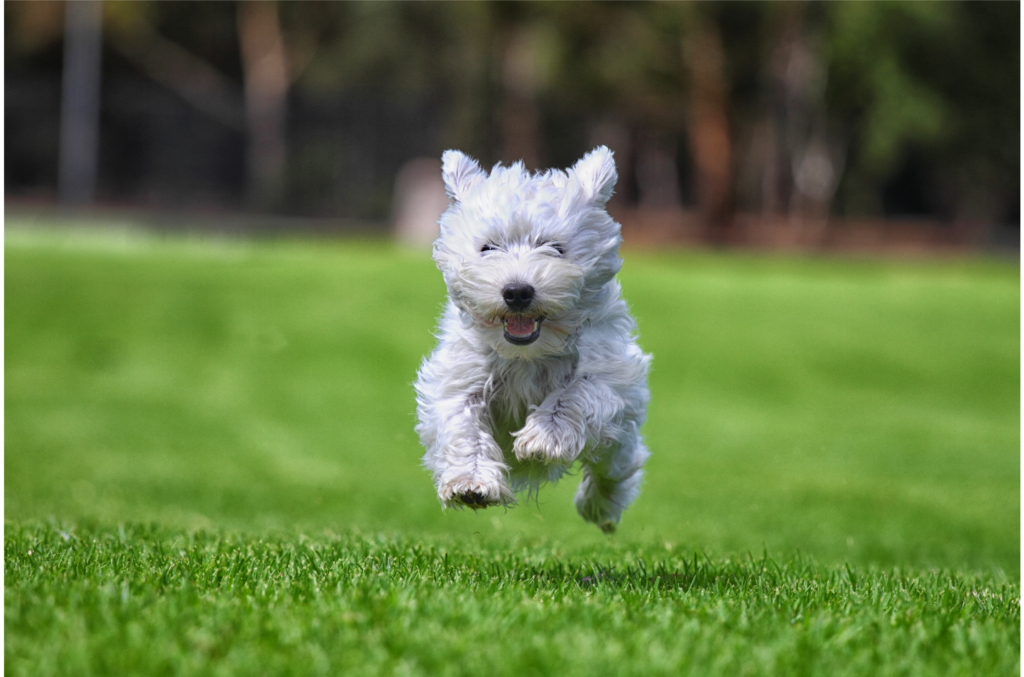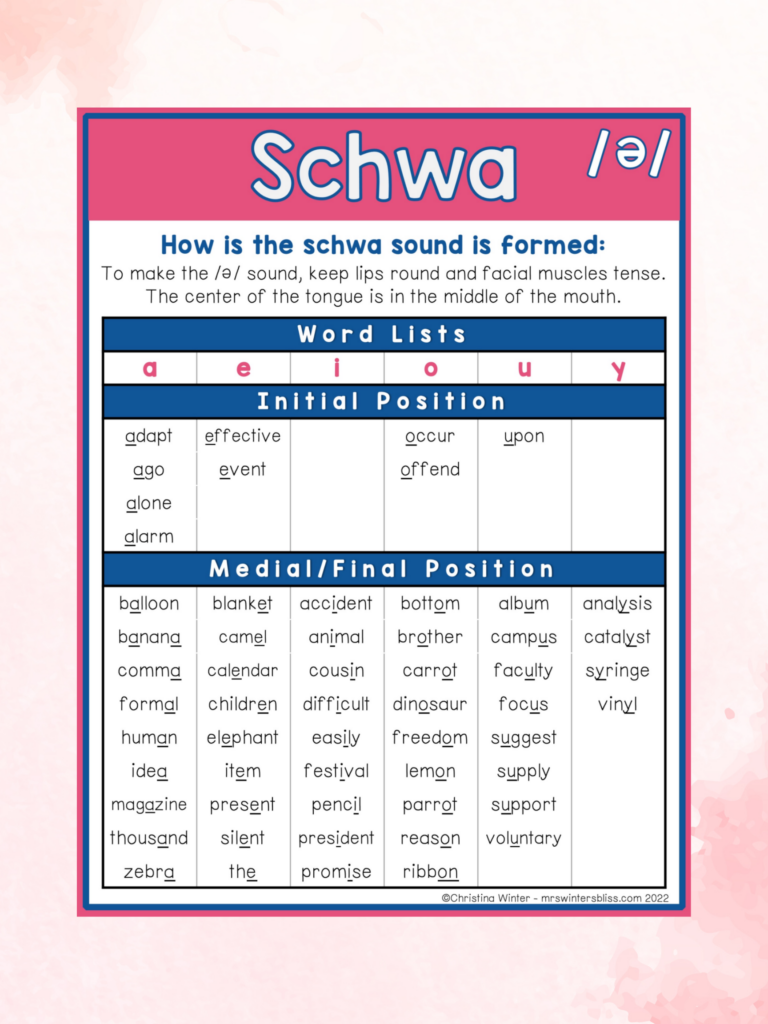

In this post, I answer the question “what is the schwa sound?” and explain how to identify the schwa sound in words. I offer 4 tips for how to teach the schwa sound to students and leave you with a FREE, downloadable schwa word list.
Do you know what the most common vowel sound is in the English language? If you answered, “the schwa sound” you are correct. If you are now asking yourself, ‘What is a schwa?” you are not alone!

Recently, I have received a number of questions about the schwa sound. Teachers want to better understand what it is and how to teach their students about it. So today I am happy to share what I have learned in my studies about the schwa sound. I will explain what it is and offer you 4 tips for how to teach the schwa sound.
What is the Schwa?
Schwa is the most common vowel sound in the English language. In fact, roughly one in five English words has the schwa! It sounds like the short u or sometimes short i vowel sound. Any of the vowels can present the schwa sound, even some vowel pairs.
Many say it is a lazy sound because you hardly open your mouth to create the sound. It takes very little time or effort to say it in a word. The tongue, the lips, and the jaw are all relaxed.
The schwa sound is represented by /Ə/. It looks like an upside-down ‘e’ or you can think of it as an ‘e’ that is too lazy to sit up straight.

The schwa is found in multi-syllable words. These words have both stressed (or accented) and unstressed (or unaccented) syllables. The schwa sound is in the unstressed syllable.
And finally, it is important to note that sometimes dialect can determine whether a vowel is saying the schwa sound. Take the word “event” for example. Some may say it with a long E to start, while others will pronounce it as a schwa.
Stressed Vs. Unstressed Syllables
The English language is stress-timed. This means that some syllables take longer to say than others.
Syllables that take longer to say are referred to as stressed or accented. Stressed syllables last longer, and are said louder and at a higher pitch.
Unstressed syllables are usually said faster and at a lower volume than stressed syllables. As a result, the vowel sound in an unstressed syllable can lose its purity and end up making the schwa sound.

Words with more than one syllable have both stressed and unstressed syllables. You will almost always find schwa in the unstressed syllable of these words. (Note that compound words are not included in this generalization because they are not two-syllable words. They are two words put together to make one word!)
4 Tips for Teaching Schwa
Schwa is a concept that can be really confusing to students as they learn to decode longer, multi-syllable words. And honestly, it isn’t an easy thing to teach! There aren’t any fast, hard rules when it comes to how the schwa is spelled. Students just need lots of practice and exposure.
That being said, there are some things you can do to help students better understand the schwa sound and when it might be used. Here are some things you can do to help give them more exposure to and practice with the schwa sound:
1. Help students understand stressed and unstressed syllables
Once students are reading and writing two-syllable words, they can begin to learn the differences between stressed and unstressed syllables. Read a word, count how many syllables are in the word, and identify the stressed and unstressed syllables.
To help students identify which syllables are stressed, teach them a trick called, “Call the dog”. Have students imagine they are calling their puppy home. When they call the animal’s name, they will say one syllable louder and in a higher pitch. That is the accented syllable. For example, if the dog’s name is Benson, they would call him home with the accent on the first syllable, BEN. It would sound like, BEN-suhn.

You can also explain to students that sometimes the stressed syllable changes based on context. Consider the word “content”. If we put the accent on the first syllable it makes sense to say, “The book had good CON-tent.” If we stress the second syllable it changes the meaning. “The boy was con-TENT to lay on the couch.” While we don’t want to encourage students to rely heavily on context clues when decoding, context can be helpful when deciding which syllable to stress.
2. Group schwa words by the vowel letter
One of the most confusing things about the schwa sound is that it can show up as any of the five vowels. To help students from getting overwhelmed organize your schwa word examples by vowel letter.
This FREE schwa word list offers plenty of examples of words for each vowel. You can download it here.

For each vowel, show examples of how it makes the schwa sound, but also show examples of when it makes short and long vowel sounds. For example, if you start with “A” you can show the words “baker” (long A) “bad” (short a) and “about” (schwa). Discuss with students how the vowel A shows up differently in each word. Offer other words with the vowel A and sort them into long a, short a or schwa.
3. Teach students to use their “spelling voice”
When teaching students how to spell words with a schwa sound, encourage them to use their ‘spelling voice’. Have them pronounce the unstressed vowel or syllable the way it would be pronounced if the vowel sound WAS stressed. For example, if they were spelling the word balloon, have them pronounce it BALLoon instead of buh-loon.
4. Explicitly teach students the places where the schwa sound tends to appear.
These places include:
- The letter A at the beginning and end of a multi-syllable word is usually a schwa. For example, a-long (uhlong), a-bout (uhbout), dat-a (datuh), A-las-ka (uhlaskuh)
- The vowel before the letter L at the end of words is usually schwa. For example: cam-el (camul), pen-cil (pencul), form-al (formul).
- The vowel sound before the letter N at the end of words is usually a schwa. This vowel is usually an A or an O. For example: hu-man (humun), wag-on (wagun)
- If a long or short vowel sound doesn’t sound right in a word, teach students to substitute one of the sounds for schwa. Hint: The schwa is more often the 2nd syllable, so encourage them to try that first.
If you are looking for resources to help you give students practice with the schwa sound, take a look at my Weekly Word Study Units for kindergarten, first, second and third grade. They give students explicit instruction and practice with words that include the schwa sound.
Ultimately, learning to spell words with the schwa sound comes down to having LOTS of practice and exposure. I hope the information and tips I have offered here today will help you to provide your students with the practice they need to master that tricky schwa sound!










